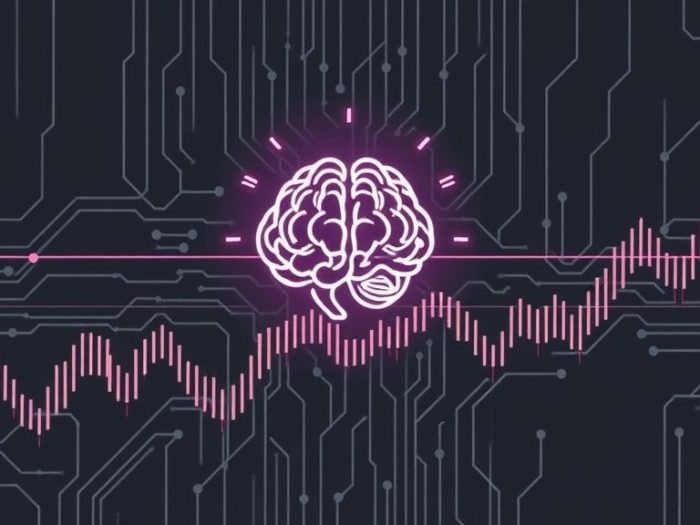Machine learning (ML) offers powerful tools for analyzing financial data and potentially
predicting stock price movements. However, the stock market is complex and inherently
unpredictable, so it’s crucial to approach ML for stock prediction with realistic
expectations. This article explores machine learning models that have shown some success in
stock prediction, along with their limitations.
Understanding the Challenges of Stock Prediction
Predicting stock prices is notoriously difficult due to:
- Market Noise: Random fluctuations in price.
- Non-Stationarity: Statistical properties of stock prices change over time.
- Complexity: Many factors influence stock prices.
Machine Learning Models for Stock Prediction
While no model can guarantee profits, here are some ML models that have shown promise in
financial applications:
1. Time Series Models
These models analyze sequences of data points ordered in time.
- LSTM (Long Short-Term Memory): A type of recurrent neural network (RNN) that can capture dependencies in sequential data.
- ARIMA (Autoregressive Integrated Moving Average): A statistical model that uses past values to predict future ones.
2. Supervised Learning Models
These models learn from labeled data (e.g., historical price data with corresponding future
price movements).
- Random Forest: An ensemble of decision trees that can handle complex relationships.
- Support Vector Machines (SVMs): Models that find the optimal boundary to separate data points.
- Gradient Boosting Machines (GBM): Ensemble models that combine multiple weak learners to create a strong predictor.
Data and Features
The quality of data and the features used to train ML models are critical. Common data sources
include:
- Historical price and volume data
- Technical indicators (RSI, MACD)
- Fundamental data (earnings reports, financial statements)
- News sentiment
- Economic indicators
Backtesting and Evaluation
Backtesting involves testing a model’s performance on historical data. Key metrics for
evaluation include:
- Accuracy: Percentage of correct predictions.
- Profitability: Total profit generated.
- Drawdown: Maximum loss from a peak to a trough.
- Sharpe Ratio: Measures risk-adjusted return.
Models That Actually Work (Relatively)
It’s crucial to emphasize that no model “always works.” However, some approaches can improve
your chances:
- Focus on Short-Term Predictions: ML models tend to be more effective at predicting short-term price movements (e.g., minutes to hours).
- Combine Models: Use multiple models and combine their predictions.
- Adapt to Market Conditions: Models need to be regularly updated and adjusted to changing market dynamics.
- Manage Risk: Strict risk management is essential, as ML models can still generate losses.
Important Cautions
- Overfitting: ML models can be over-optimized to perform well on historical data but fail in live trading.
- Data Quality: Inaccurate or incomplete data can lead to poor model performance.
- Black Box: Some models (e.g., neural networks) can be difficult to interpret.
- Computational Cost: Training and running ML models can be computationally expensive.
Conclusion
Machine learning offers powerful tools for stock prediction, but it’s not a magic bullet.
Successful implementation requires careful data selection, model selection, backtesting, and a
realistic understanding of the limitations. Always prioritize risk management and approach ML
stock prediction with caution.
Related Keywords
Machine learning stock prediction, AI stock trading, algorithmic trading, stock price
prediction, time series analysis, LSTM, ARIMA, financial machine learning, stock market
prediction, AI in finance.
Frequently Asked Questions (FAQ)
1. Why is stock prediction challenging?
Stock prediction is challenging due to market noise, non-stationarity (changing statistical properties), and the complex interplay of factors influencing prices.
2. What are time series models?
Time series models analyze sequences of data points ordered in time, like historical price data, to predict future values.
3. What is LSTM?
LSTM (Long Short-Term Memory) is a type of recurrent neural network (RNN) that can capture dependencies in sequential data, making it useful for time series analysis.
4. What is ARIMA?
ARIMA (Autoregressive Integrated Moving Average) is a statistical model that uses past values to predict future ones, commonly used for time series forecasting.
5. What are supervised learning models?
Supervised learning models learn from labeled data, where the model is trained on historical data with corresponding future price movements.
6. What is Random Forest?
Random Forest is an ensemble of decision trees, a machine learning model that can handle complex relationships between variables.
7. What are Support Vector Machines (SVMs)?
Support Vector Machines (SVMs) are models that find the optimal boundary to separate data points into different categories, useful for classification and regression tasks.
8. What are Gradient Boosting Machines (GBMs)?
Gradient Boosting Machines (GBMs) are ensemble models that combine multiple weak learners (simple models) to create a strong predictor.
9. What are some of the challenges of using machine learning for stock prediction?
Challenges include overfitting, data quality issues, the “black box” nature of some models, and the computational cost of training and running models.
10. Can machine learning models guarantee profits in the stock market?
No, no machine learning model can guarantee profits. The stock market is inherently unpredictable, and models can generate losses.



